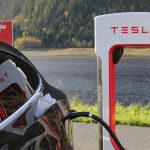The ability for computer vision models to switch tasks with ease and minimal human intervention is not science fiction—it’s the outcome of innovative research led by teams from UC Berkeley and Tel Aviv University. These teams have developed a novel approach that allows models to adapt to new tasks through the identification and manipulation of ‘task vectors’, which are specific patterns of activations within the neural network that encode information related to various tasks. In doing so, they’ve reduced the need for large, task-specific datasets that traditionally hinder the adaptability and deployment speed of such models.
Over time, there has been much discussion around the challenges computer vision systems face due to the need for extensive and diverse datasets. The reliance on huge amounts of data tailored to specific tasks has been a bottleneck for effective deployment, particularly in dynamic environments where versatility and prompt adaptation are crucial. The conversation has gradually shifted towards models that learn in-context, reducing dependency on vast datasets and simplifying the training process. The latest research is a significant stride in this direction, utilizing machine learning in an innovative way that could potentially change how models are trained and applied.
What Are Task Vectors?
Task vectors emerge as a groundbreaking concept within the neural network of the MAE-VQGAN model, a state-of-the-art visual prompting model. Researchers have identified these vectors by analyzing activation patterns, revealing that certain vectors correspond with specific visual tasks. The vectors are then fine-tuned using algorithms such as REINFORCE to guide the model towards better performance across a variety of tasks.
How Does This Approach Improve Efficiency?
By focusing on modifying internal task vectors, the model’s computational demand decreased by 22.5%. This substantial reduction in resource requirements did not come at the expense of accuracy. On the contrary, the enhanced model outperformed its predecessor in various benchmarks, exhibiting improvements in metrics such as mean intersection over union (mIOU) and mean squared error (MSE) for image segmentation and color enhancement tasks.
What Are the Real-World Implications?
The implications of these findings extend beyond the research lab. The ability to adapt swiftly to new tasks suggests a future where computer vision models can be deployed in real-world situations with unprecedented flexibility, potentially revolutionizing industries that rely on visual data processing. Such adaptability is particularly promising for scenarios where quick model adjustment is necessary, such as in autonomous vehicles or real-time surveillance systems.
Useful Information for the Reader
- Task vectors reduce reliance on big datasets.
- Models adapt on-the-fly to new tasks.
- Significant resource efficiency improvements.
In conclusion, the research unlocks a new paradigm in computer vision technology, where models are no longer constrained by the sheer volume of task-specific data. It illustrates a future where adaptability and efficiency coexist, enabling models to pivot quickly and effectively in response to diverse tasks. This leap in task adaptability aligns with the broader trend towards creating intelligent systems that learn more like humans — using less data and demonstrating greater flexibility.










